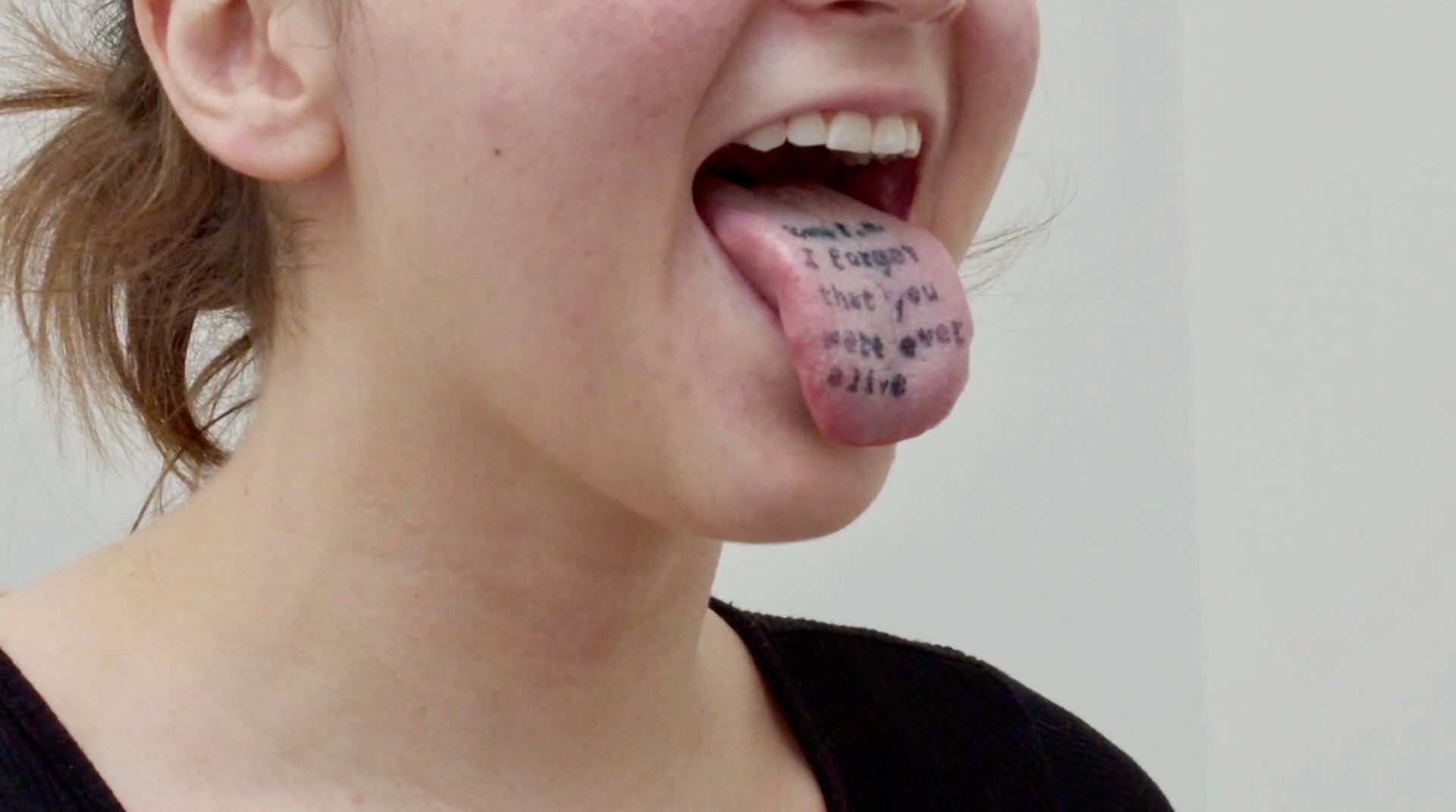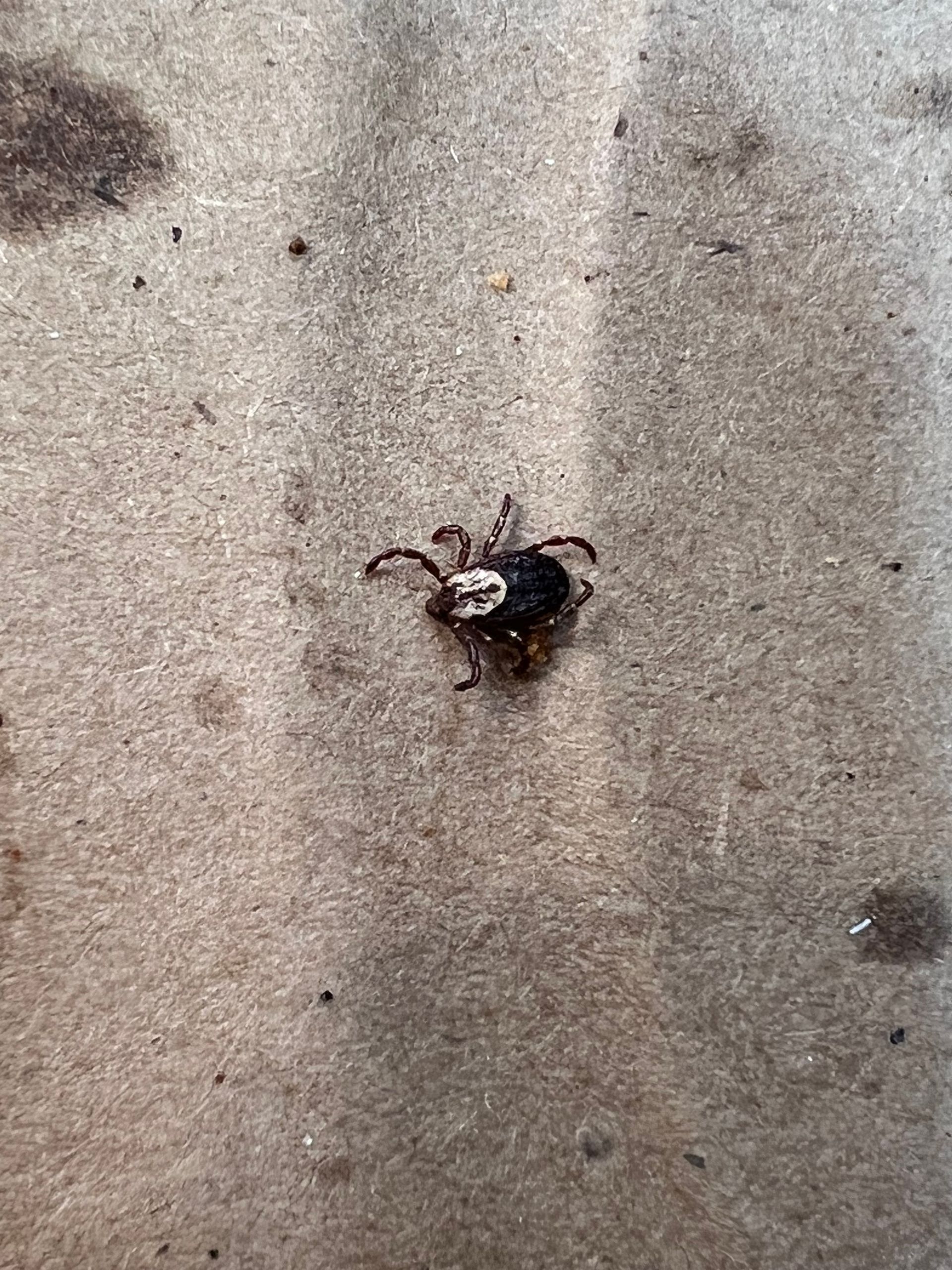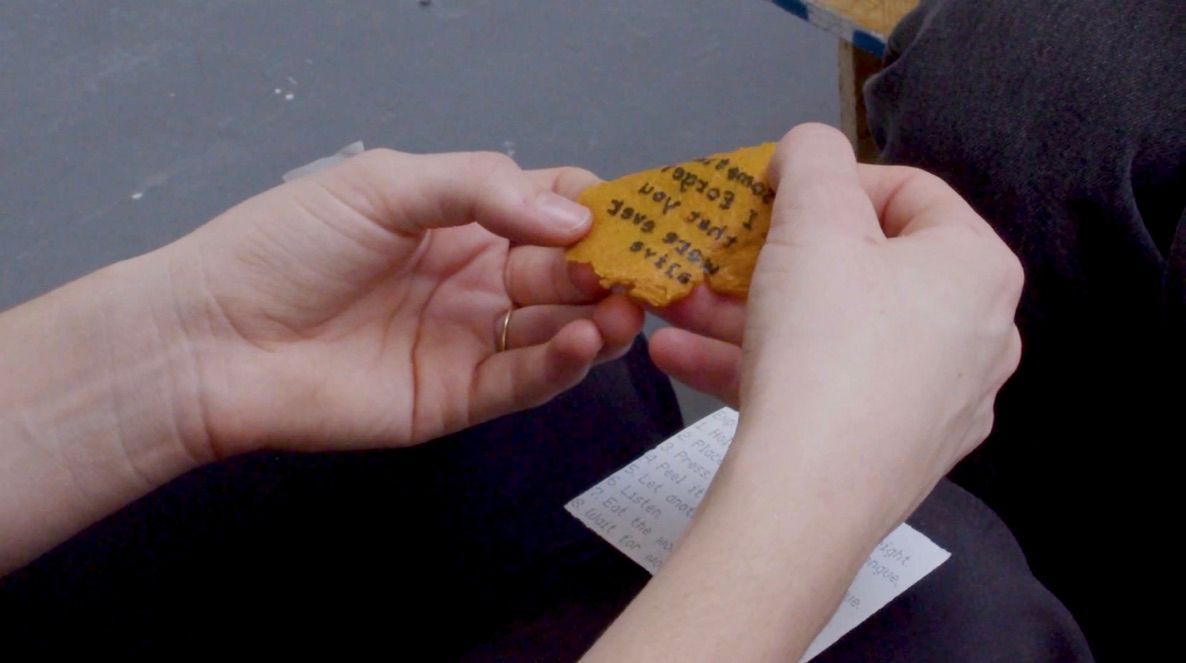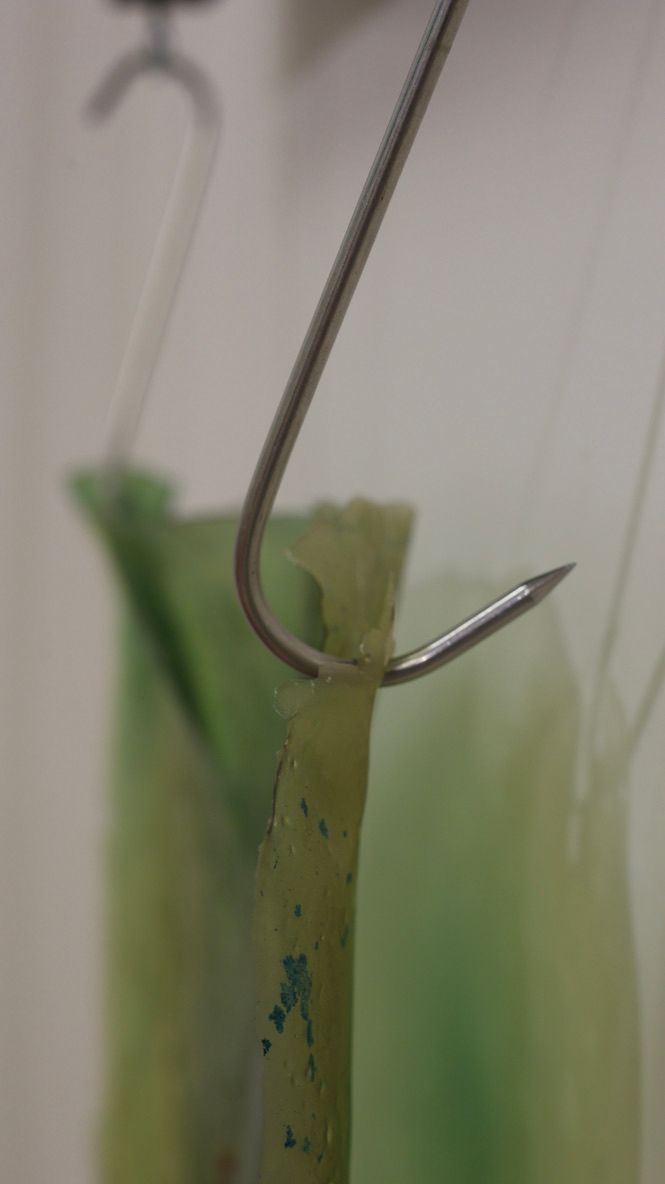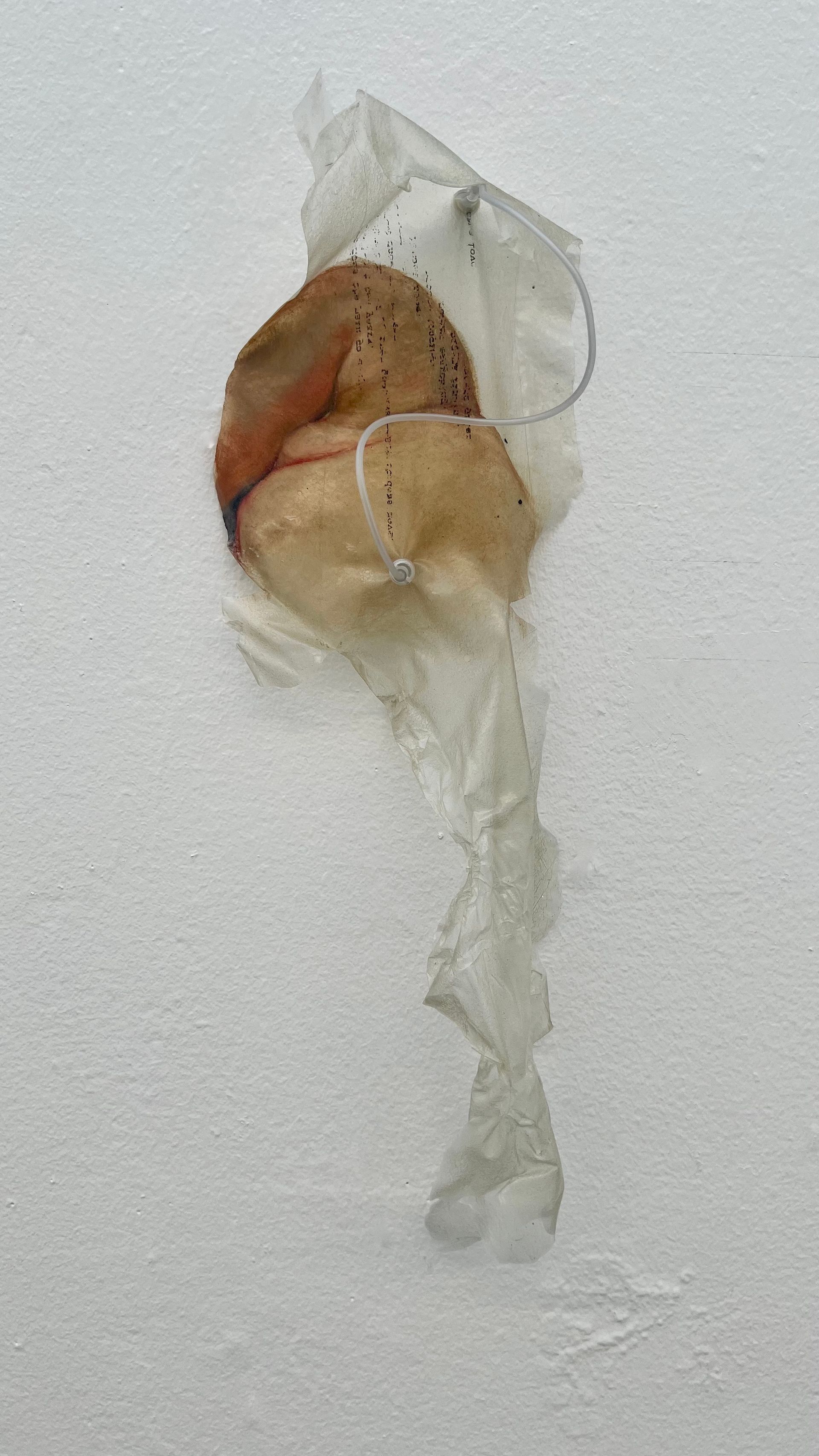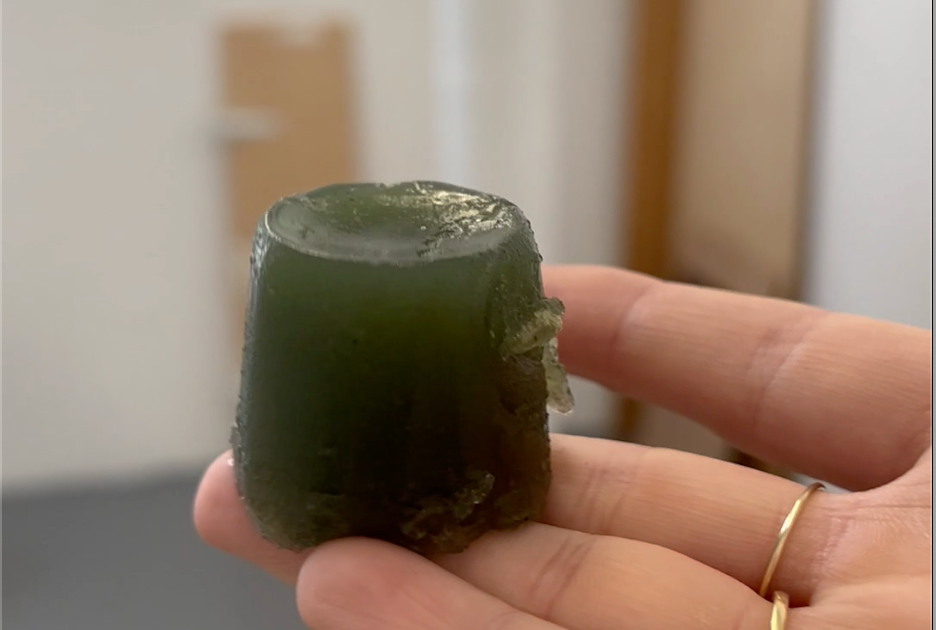In-Digestion
Mckenna Goade • February 1, 2025
so close to dissolving
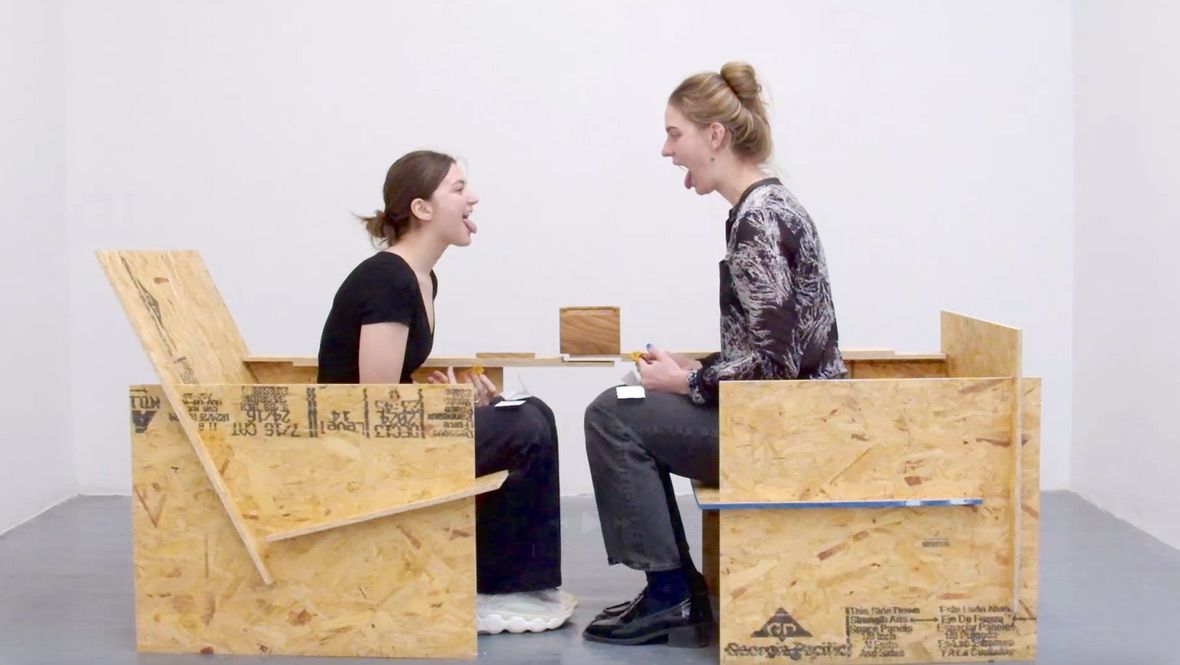
In-digestion
Last week, I was working on a design for chairs.
I was looking through archives, scrolling through thousands of chairs.
I used up sketchbook pages drawing chairs,
drawing chairs,
drawing chairs.
All I could think of were chairs.
And then I opened my phone to text you.
You would know about chairs.
I carry with me a desire to interface with the more-than-human—there must be some process that can distill meaning down to a particle that can be digested and understood by every being. A way to send a message that you don’t need eyes to read. A message that passes through skin. A message that surpasses electrons’ inability to touch. A message that won’t repel off the veil.
A message that you don’t need to be alive to read.
So here I am, “at the border of language… beating on the grave.”
I was/am writing an ongoing poem/letter with no beginning or end and can be read in any direction; some call and respond to each other, and some don’t yet have their companion. Like Fernando Pessoa’s Book of Disquiet, it relies on someone other than the author or reader to arrange the pages. This text generates meaning between writer and reader “by matching two halves of a text. It is a meaning not accessible to others.” These letters can’t be passed by hand; the reader has no hands, eyes, body… I need this message to be translated to a particle singular enough to be universal.
If touch isn’t touching (since electrons repel), this message must involve the transfer of electrons. A message where both parts have a corresponding valence, a message that would so desire to cling to another that they become one. The means of sending this message would be a way of giving and receiving information that actually becomes part of the writer and reader (because this is the only way for them actually to touch).
What follows is a set of instructions for a possible way to send a message like this.
INT: GALLERY — ANY HOUR
You enter a room where two chairs (made of oriented strand board) face each other, arm-rests connected by a small wooden box. One chair reclines, the other erect. On the wall is a placard with these words:
That Which is Read by the Body is a participatory piece involving the placement and consumption of an edible message. Please read before engaging:
Ingredients & Allergies: Made from food-grade food coloring, agar-agar, and canned peach and pear juice. Do not participate if you have allergies to these ingredients.
Hygiene: Please wash your hands before handling materials.
Consent & Comfort: Participation is voluntary. You are welcome to observe rather than take part.
If you wish to participate, choose a partner and sit in the chairs across each other. Await further instruction.
Choosing to engage, you take your place in one of the chairs. There is writing on the wall in front of you: “Open the box, please take one.” You reach into the box and pull out a small envelope; you open it. Inside is a small piece of paper with these words inscribed:
Exp. 03312025
1. Hold the note. Feel its weight.
2. Without reading, place the words on your tongue.
3. Press. Briefly (one, two).
4. Peel it away. Show your tongue.
5. Let another read.
6. Listen.
7. Eat the words.
8. Wait for words to dissolve.
Behind this paper is a 2-3 inch yellow-orange semi-transparent material with backward black text. The material is made with food coloring on a substrate crafted from canned peaches and pear juice.
When you place the material on your tongue, the text transfers and your partner reads the words. Your partner then does the exercise, and you read the text to them.
You both forget the words.
It could’ve said any of the following:
I’m not sure
you’re there.
I hope.
I’m scared
I won’t
see you
anymore.
fear makes
my vision
worse.
I can
barely
remember.
Where do
I go
when you
forget?
Last summer
clings to
my tongue
like a
fading pulse.
It hurts
that you
are gone.
The hurt
is where
I hold you.
I won’t
make
something
that lasts.
If works
stay here
they don’t
get to you.
You would’ve
thought this
was funny
penis.
so close
to dissolving
barriers
between
flesh and self
you and me
I remember
I’ll miss you.
Sometimes
I forget
that you
were ever
alive.
I want
to talk
about
to you
Sometimes
I think
you miss
me too.
I remember
when you
knew me.
People
are sick
of me talking
about this.
Talking
about to
you
I wonder
if you’d
like these.
I’m still
the same
I am not.
Why can’t
we talk
anymore?
Whole.
If it
isn’t your
voice
in the wind
a bitter taste
with open eyes
the wind
and rain
erased you.
You whom
I long for
Will you
forget me
too?
Only
know you
from me
My body
never again
remembered
Useless borders.
I tried to
text you
again.
I forgot.
How endless?
A phrase
you try
not to hear
What I
wanted
to say
cure me
of this
void.
walls
of breath
unimaginable
continuum
to be dearer
to dirt
if only,
a collapsing
interface
Language
traces.
to say it
whistling
through
the crevices
in the
net of the
sky
I can’t
trace you
ruins
in
rivers
it’s only
death
unearthed
by language
speaking
from above
a state
of ashes
I have now conducted this experiment several times, and each time, I have been surprised by how quickly the words on both the recipient’s own tongues and the tongues of others are forgotten. The language almost magically dissolves on the tongue and from the mind. Even if the text transfers perfectly and is entirely legible to a living audience, the words simply are not remembered. We get to watch, in real-time, meaning dissolving to language dissolving to words dissolving to letters dissolving to…
There is an interesting safety that comes from this vulnerable act due to the temporary quality of the transfer. I can send the most intimate thoughts without fear of anyone really grasping them—even if the words rest on their own tongues and become one with their bodies. Maybe I’m pointing toward a kind of reading that can only be done from within—the body as a conduit for communication. These words “bury” themselves as an offering. I’m writing it for them anyway, maybe “the dead are “wait[ing] for a sign—from here—that they recognize.”
They aren’t an abstract concept, but they’re infinite. They aren’t historic, strictly speaking, but since they’re an eternity, they are an eternity that happens. They’re dead, certainly, but entire traditions of artistic and literary operations depend on their reactions. In any case, they are responsible for whether a work reaches its farthest limits, in its recognition and acceptance—where communicability and utility bear no more weight, and where the materiality of the object as such, where its communality reigns undisturbed. What is this sign? How can we be sure that when we experience a work of art—which is just an offering, after all—we are witnessing its journey to (its escape toward?) and from the innumerable dead?
References
Barad, Karen. “On Touching—The Inhuman That Therefore I Am (v1.1).” Preprint. In Power of Material/Politics of Materiality (English/German), edited by Susanne Witzgall and Kerstin Stakemeier, 2015. Originally published in differences: A Journal of Feminist Cultural Studies (2012).
Carson, Anne. Eros the Bittersweet: An Essay. Princeton: Princeton University Press, 2023.
Garza, Cristina Rivera. The Restless Dead (cpt) Disappropriation: Writing with and for the Dead. Vanderbilt University Press, 2020.
Pessoa, Fernando The Book of Disquiet Trans. Richard Zenith Penguin Books, 2001
Pizarnik, Extracting the Stone of Madness 1962-1972 trans. Yvette Siegert
